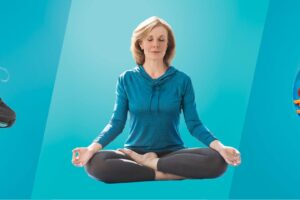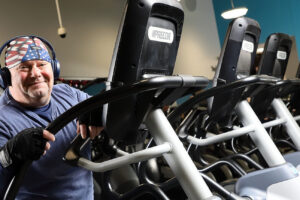Sixty percent of adults over age 60 have an underlying musculoskeletal disorder such as osteoporosis, but many aren’t aware until they experience a bone fracture. Unfortunately, a fracture increases a person’s risk of death nearly three times. The good news is that you can take steps to decrease your risk of having a fracture.
Facts About Hip Fractures
Suffering a hip fracture can lower your life expectancy and increase your risk of having more fractures. In fact, without physical therapy intervention, only 15 percent of those who’ve had a hip fracture can walk across a room unaided six months later. Our goal is to prevent fracture before it occurs.
Decreasing Your Risk of Fracture
Your bone density peaks around age 30. After then, you begin to lose bone mass. The Posture for Life Program at CentraState Medical Center focuses on improving participants’ bone health.
To assess your risk for developing fractures, your doctor may recommend that you have a dual-energy x-ray absorptiometry (DEXA) scan, which uses a small dose of radiation to produce pictures of the lower spine and hips to measure bone loss. This quick, noninvasive test is the most accurate method for diagnosing osteoporosis or its precursor, osteopenia.
If your DEXA scan reveals that you are at risk for fracture, our Posture for Life Program can help decrease that risk. The program begins with a full physical therapy evaluation and assessment, including posture, balance, strength, and range of motion. Once we understand your body’s specific weaknesses, we will work with you to restore your posture and alignment.
An important aspect of the program is helping participants become more aware of their posture, and then provide specific exercises to improve it. Participants first start with non-weight bearing exercises to strengthen the muscles involved in maintaining proper posture before moving onto weight-bearing exercises to strengthen bones.
Exercises are designed to:
- Promote good body alignment
- Strengthen bones
- Improve respiratory function
- Improve posture
- Improve balance
- Boost circulation
- Reduce your risk of falling
- Reduce your fear of falling
Most patients attend three to six sessions with a physical therapist, depending on the patient’s health status, goals, and progress. Exercises learned during the program should be continued after participation ends to maintain progress.
We consider the program a success when a patient has met his or her goals, such as walking without an assistive device, like a walker. Other measures include improved quality of life and increased independence.
For Lynn, a participant with spinal stenosis, a narrowing of the spinal canal that can put pressure on the nerves that travel through the spine, success meant being active again, and most importantly—feeling well enough to no longer need spine surgery.
Proper Posture Isn’t Just for Seniors
As we age, our posture changes. However, a humped spine is not a normal part of aging. Called a kyphotic posture, this rounded back can be formed from poor posture habits and can affect balance, contributing to falls. However, it can be corrected with proper exercise.
Posture for Life can benefit people of any age, particularly younger participants who frequently sit at a desk looking at a computer monitor, which can affect posture and lead to decreased muscle strength. Desk jobs can cause repetitive stress injuries from sitting too long and performing the same movements over and over again. For jobs that require looking down at equipment or screens, neck issues can be common, since looking down can make a head that normally puts 8 to 10 pounds of pressure on the neck apply 10 to 15 pounds of pressure. This change in head weight alters how much the neck muscles have to work to stabilize the head.
Up to 80 percent of fractures are silent, meaning you may be unaware that you’ve suffered a fracture. Instead of waiting for a fracture to occur, this program teaches proactive steps for preventing a fracture. It’s appropriate for anyone with back or hip pain, including those with scoliosis.
The program is covered by most insurances and a prescription for physical therapy is needed to participate.
Risheeta Joshi, PT, DPT, is a physical therapist at CentraState Medical Center in Freehold, NJ. She can be reached by calling 866-CENTRA7.





